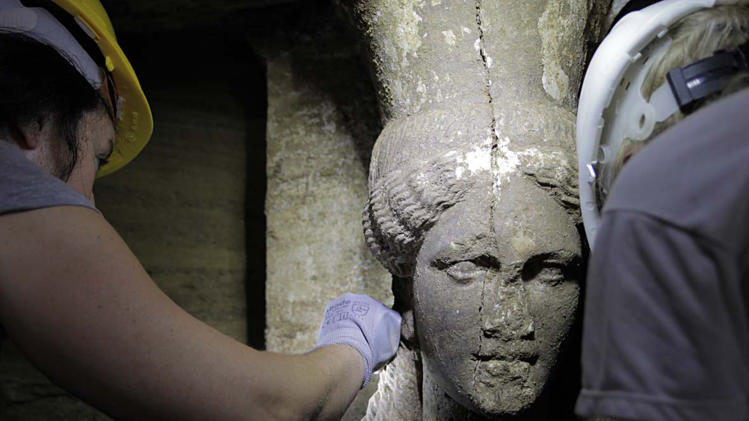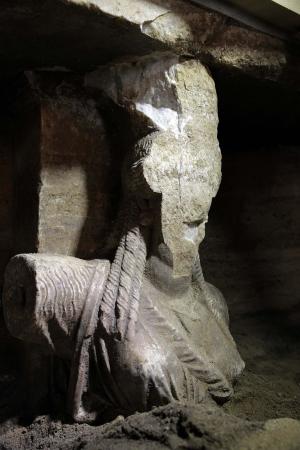Jack the
Ripper, one of the most notorious serial killers in history, has been
identified through DNA traces found on a shawl, claims a sleuth in a
book out on Tuesday.
The true identity of Jack the Ripper, whose grisly
murders terrorized the murky slums of Whitechapel in east London in
1888, has been a mystery ever since, with dozens of suspects that
include royalty and prime ministers down to bootmakers.
But after
extracting DNA from a shawl recovered from the scene of one of the
killings, which matched relatives of both the victim and one of the
suspects, Jack the Ripper sleuth Russell Edwards claims the identity of
the murderer is now beyond doubt.
He says the infamous killer is Aaron Kosminski, a Jewish emigre from Poland, who worked as a barber.
Edwards, a businessman interested in the Ripper story, bought a bloodstained Victorian shawl at auction in 2007.
The story goes that it came from the murder scene of the Ripper's fourth victim, Catherine Eddowes, on September 30, 1888.
Police
acting sergeant Amos Simpson, who had been at the scene, got permission
from his superiors to take it for his dressmaker wife -- who was
subsequently aghast at the thought of using a bloodstained shawl.
It
had hitherto been passed down through the policeman's direct
descendants, who had stored it unwashed in a box. It briefly spent a few
years on loan to Scotland Yard's crime museum.
- Victim disemboweled -
Edwards sought to find out if DNA technology could conclusively link the shawl to the murder scene.
Working
on the blood stains, Doctor Jari Louhelainen, senior lecturer in
molecular at Liverpool John Moores University, isolated seven small
segments of mitochondrial DNA, which is passed down through the female
line.
They were matched with the DNA of Karen Miller, a direct descendant of Eddowes, confirming her blood was on the shawl.
Meanwhile stains exposed under ultra-violet light suggested the presence of seminal fluid.
Doctor
David Miller, reader in molecular andrology at the University of Leeds,
managed to find cells from which DNA was isolated.
With the help of genealogists, Edwards found a descendant of Kosminski through the female line, who offered samples of her DNA.
Louhelainen was then able to match DNA from the semen stains to Kosminski's descendant.
For Edwards, this places Kosminski at the scene of Eddowes' gruesome murder.
Eddowes,
46, was killed on the same night as the Ripper's third victim. An
orphan with a daughter and two sons, she worked as a casual prostitute.
She was found brutally murdered at 1:45am. Her throat was cut and she was disemboweled. Her face was also mutilated.
The belief is that the shawl was left at the crime scene by the killer, not Eddowes.
- Calls for peer review -
Kosminski
was born in Klodawa in central Poland on September 11, 1865. His family
fled the imperial Russian anti-Jewish pogroms and emigrated to east
London in the early 1880s. He lived close to the murder scenes.
Some
reports say he was taken in by the police to be identified by a witness
who had seen him with one of the victims, and though a positive
identification was made, the witness refused to give incriminating
evidence, meaning the police had little option but to release him.
He
entered a workhouse in 1889, where he was described on admission as
"destitute". He was discharged later that year but soon ended up in an
insane asylum.
He died from gangrene in an asylum on March 24, 1919 and was buried three days later at East Ham Cemetery in east London.
Some have cast doubt on Edwards' findings.
The
research has not been published a a peer-reviewed scientific journal,
meaning the claims cannot be independently verified or the methodology scrutinized.
Professor Alec Jeffreys, who invented the DNA fingerprinting technique 30 years ago this week, called for further verification.
"An
interesting but remarkable claim that needs to be subjected to peer
review, with detailed analysis of the provenance of the shawl and the
nature of the claimed DNA match with the perpetrator's descendants and
its power of discrimination; no actual evidence has yet been provided,"
Jeffreys told The Independent newspaper.




























 In British-ruled, cobra-infested India, a bounty was offered for
cobra-skins, so enterprising folks started breeding cobras, leading to
the program's cancellation, whereupon all those farmed cobras were
released into the wild, a net increase in cobra population.
In British-ruled, cobra-infested India, a bounty was offered for
cobra-skins, so enterprising folks started breeding cobras, leading to
the program's cancellation, whereupon all those farmed cobras were
released into the wild, a net increase in cobra population. 

